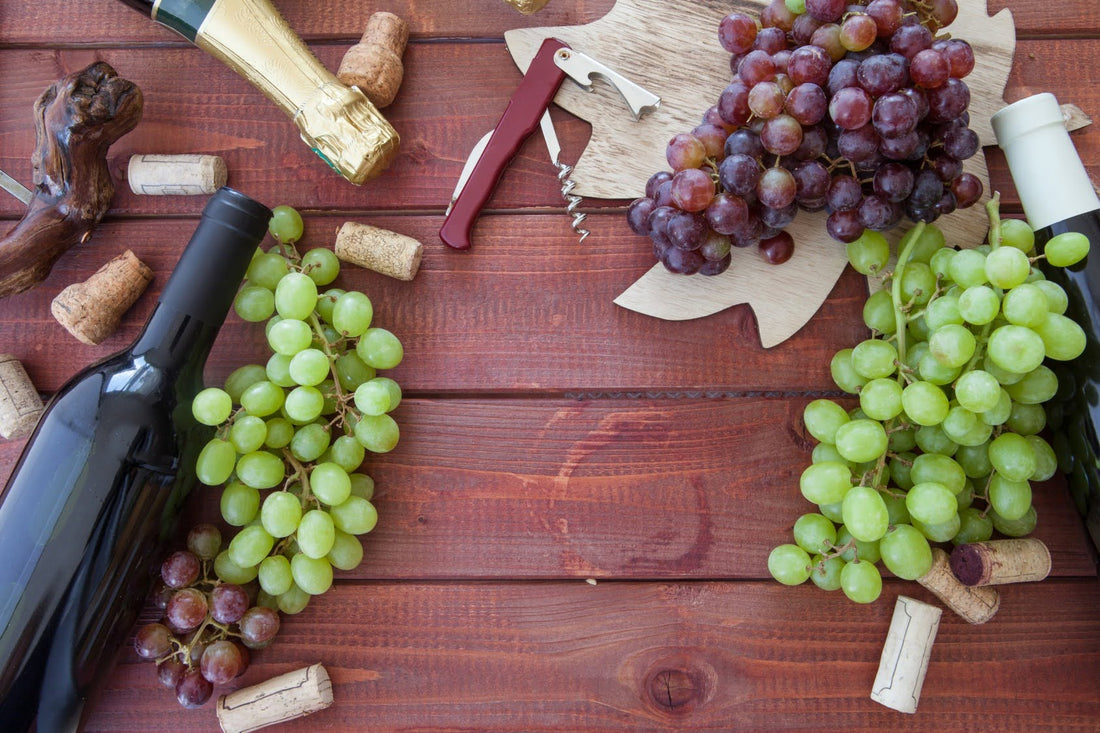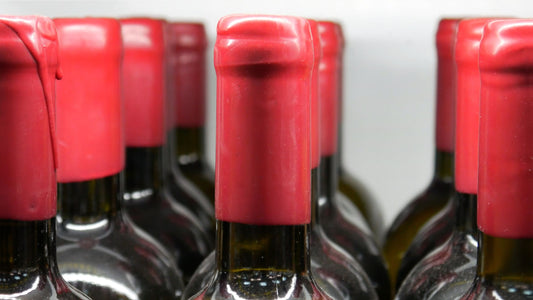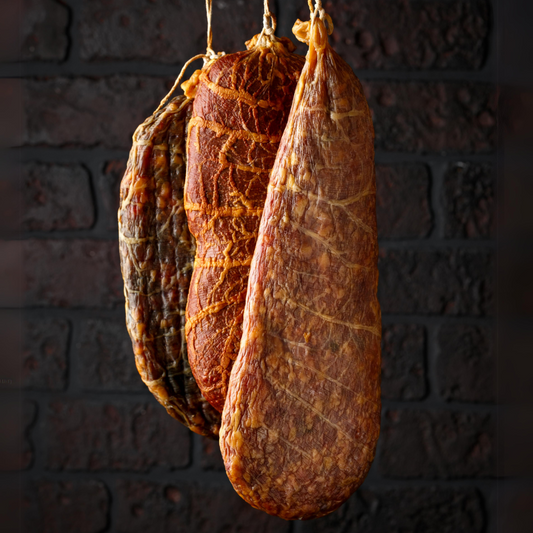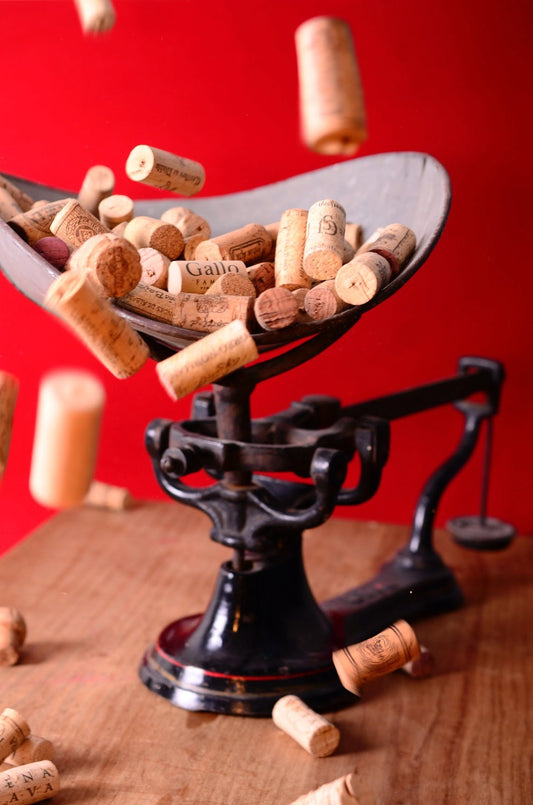Grape's Fermantation in Wine Making

Think about it, have you ever thought about the importance of choosing the right grapes when making your own wine at home? We'll help you make your wine impress your friends and family without spending too much on the fancy equipment.
Throughout the long process of fermentation, nature takes control in giving us the perfect mix of alcohol. It is thanks to microscopic yeast that come on the grape's skin, giving us a potent drink that puts us in a good mood.
Grapes’ quality: the fermentation key
What makes a good wine? The quality of its grapes.
If you want to make a great wine, you need grapes to be of highest quality. This is the reason why you must be informed about the best period of the harvest according to the grape variety. What to do and what to avoid:
- You should avoid harvesting rain wet grapes or with too much dew as the must be too dilute; moreover, it should be not too hot as the fermentation could fail if not done properly.
- Do not wash the grapes before pressing because the yeast would be lost whereas the pesticide would persist.
- It is essential to press quickly after the harvest to avoid acidification
- Make sure to use open plastic trays to let transpire the stored grapes.
- The process must take place in a clean and ventilated room, without strong smell, as the fermentation releases carbon dioxide harmful to health.
The best thing to do is find grapes from a nearby grape harvest or vineyard and to control the integrity of the grape branches. Just in case you will decide to buy from your local vendor, be informed that each quintal produces 70 litres of product using a press otherwise the yield decreases.
From Pressing to Fermentation
The first step when making any wine is pressing and destemming which helps to separate the liquid from the fruit, removing the stems using a stainless steel destemmer. If you only have a crushing machine, you have to separate the stems by hands as this helps the pulp and peelings to reduce the acidification. During this operation, add potassium metabisulphite as it has antiseptic and antioxidant properties: a teaspoon is enough for each quintal (not more as it can stop the fermentation!). The obtained must from this first production must added directly into a fermentation tank to let “maceration”, be sure that it has been disinfected with the right oenology cleansers.
During the fermentation:
- Do not cover hermetically the tank (only with a sheet)
- Close doors and windows but let aerate in the properly way
- Keep constant temperature, between 21 and 25 C° (just in case the temperature is around18 °C use heaters)
- Control that carbon dioxide production will not increase (also using a stearic candle)
- Do not fill the tank over than 75% where the must ferments as during the tumultuous phase it could overflow.
You can use the same tank to let ferment the must where it’s been pressed, but to avoid the acidic nature of the must when transformed, we suggest using a wood tank or a plastic tub suitable for food contact and place a weight upon the must in order to press it. Usually winemakers use crossed wooden poles, sized and positioned on the must with weights that help the pressure.
Fermentation timing
The tumultuous fermentation begins after 4-5 hours after pressing. The yeasts on the peeling’s berries may not be sufficient, so add selected yeasts to help process starting:
- Add the prescribed doses according to the packaging
- Dilute them into warm water
- Add some sugar and after a while you will notice foam on the surface, that means it is fermenting, then after 3-4 hours you can add it to the must.
It may take up to 24 hours to start the boiling, the duration may vary, just in case of black grapes it is 4-5 days. During these days the punching must be done (it consists in breaking the cap with a stick so that peelings will concede substance and colors to the must). This operation has to be done at least every 12 hours, mixing the peelings, also called as marc, that created the cap on the must surface. During this process it is also suggested to make some “passages”, taking the liquid on the bottom, using a pump or by hands and pouring it directly on the cap. If you wish a full-bodied product, bitter, colored and with strong alcohol volume, the slow fermentation can be also of 18-21 days.
Fermentation temperature and density
One of the keys on your fermentation process is daily checking on the temperature and density. We recommend to take notes on your notebook, so you can notice your fermentation performance. The temperature has to be measured with a thermometer whereas the density measurement has to be done with the right chemical glassware for food use, such as a hydrometer.
During the fermentation this value decreases to reach a value between 0.990 and 0.995 (racking values). If the value is higher than 1, it means that fermentation is still not concluded. If during the fermentation the density stabilises on a value higher than 1 it means, it's blocked therefore it must be activated again (among possible causes: too cold room or yeasts deficiency).
Warnings: this value must be around 0 (zero), but it cannot exceed in negative, or it could become acidic.
White grapes’ fermentation
In case of white grapes, let it ferment for only 1 day while if you would like to have a rosé through the marc, it is suggested to stop the fermentation after maximum 18-24 hours. To obtain healthy and preservable product it is necessary to reach a volume of alcohol of minimum 11.5-12, but the must does not always present enough sugars. To avoid this happens, you have to check with a hydrometer in a cylindrical container with must. If the alcohol volume is too low, you should add sucrose (sugar), measuring 1.7kg for each must quintal for each grade that you want to increase.
If the fermentation doesn’t start in correct way, it's possible that the room temperature is too low, and it is necessary to heat the room; a yeasts deficiency may also occur therefore you should buy selected yeasts to be added to the must. On the contrary, it may be possible that must temperature exceeds 36 °C and in this case the fermentation would stop because the yeasts don’t work anymore.
Racking, pouring and final bottling of homemade wine.
The alcoholic fermentation ends after 4 to 10 days. You have to taste the must and feel that all the sugar is transformed in alcohol. At this point, the racking starts and it's the separation between the peelings and wine. For this process you can also use a wicker sieve that will hold the peels and the seeds. Transform the liquid completely in a full tank and only at this point we can lower the temperature under 16 °C. We put the peelings, still containing the liquid, in the press and we perform the first pressing. The liquid will be added to the other while the one got from the second pressing should be mixed to other typologies to be consumed daily. The wine tank (tank, demi-john or barrel) will be filled with liquid and used to remove sediment deposits in the fermentation process. It will need to be periodically drained and refilled with new wine to avoid air contact.
 A useful suggestion is to not shake it before the pouring. The sediments not only make turbid the liquid but are also bearers of harmful bacteria. The first pouring must be done in early March; the second pouring in June and the third in late spring, during clear and dry days. During the pouring take a sample of your product, about ½ litre, seal it in a same capacity bottle and let it analyse with your oenologist or in a specialised shop like The Artisan’s Bottega because we can give you the right indication to correct any defect.
A useful suggestion is to not shake it before the pouring. The sediments not only make turbid the liquid but are also bearers of harmful bacteria. The first pouring must be done in early March; the second pouring in June and the third in late spring, during clear and dry days. During the pouring take a sample of your product, about ½ litre, seal it in a same capacity bottle and let it analyse with your oenologist or in a specialised shop like The Artisan’s Bottega because we can give you the right indication to correct any defect.
Now you only must choose the right time to bottle your wine and then you must wait at least 6 months before tasting it. We have seen our grandparents making their own wine and it has been passed from generations to generations, a process handed down in the centuries to us, getting improved using machines and equipment that allow you to make your own delicious home-made beverage. Stick close to our blogs, and never lose sight of one of our expert guides. We have a lot of knowledge and can answer all of your questions to Feed your passion in making your own DIY projects.




